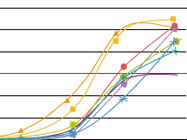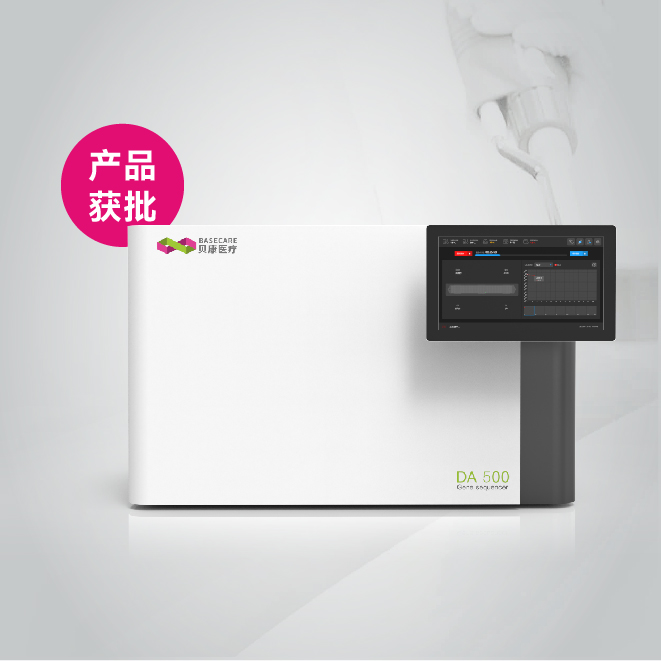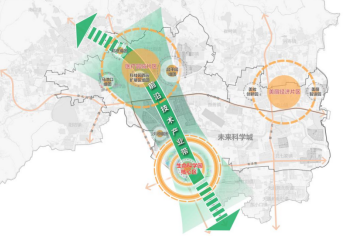Suppose you have a sample of blood from a patient you suspect has an autoimmune disorder. You want to assess the levels of various growth factors and cytokines in the blood. How would you do it?
Two classic choices are Western blotting and ELISA. In the former assay, you resolve the proteins by size on a protein gel, transfer them to a membrane and probe with an antibody to the protein of interest. In ELISA, the well of a microtiter plate is coated with antibodies to capture the protein of interest. You place the protein sample in that well, add a secondary antibody to the same antigen and probe for that secondary antibody.
Both assays depend on immunorecognition of specific antigens, and both are well accepted in the clinical and research arenas. There's just one problem: Both also can report on only one antigen at a time. They are, in the parlance of laboratory science, "single-plex."
That's fine if you care only about the abundance of interleukin-2 (IL-2), say. But what if you also want to know about IL-4, IL-5, interferon-gamma and the like? To quantify all those factors would require a battery of Westerns or ELISAs, costing time and reagents—not to mention precious sample.
Enter the multiplex assay. Unlike single-target assays, multiplex assays enable researchers to profile multiple analytes simultaneously—anywhere from two to dozens at once. Multiplex assays come in two basic formats: Planar and bead-based. The former is essentially a direct extension of the ELISA; the latter, a solution-based alternative. All require at least some new hardware in the lab. But the investment could be worth it, says Debra MacIvor, Product Manager at EMD Millipore, which offers some 80 bead-based multiplexed panels. After all, the more data researchers can squeeze from samples, the better. "When working with mice or pediatric samples or tumors, sample is of the essence," she says.
Why multiplex?
Multiplexing offers several distinct advantages over single-plex assays. The most obvious is that a multiplex assay enables researchers to extract more data from a given amount of sample in the same time as a single-plex assay. "The typical ELISA requires 100 to 200 microliters [of sample] per well for one protein," says Joe Blanchard, chief operating officer at Aushon Biosystems. By comparison, Aushon's microtiter plate-based SearchLight arrays (which can profile up to 12 analytes per well in such areas as angiogenesis, cytokines and matrix metalloproteinases) require just 50 microliters per well. Bio-Rad Laboratories' Bio-Plex assays (which use Luminex microbeads) require just 12.5 microliters or less per reaction, says Michelle Heim, Bio-Plex business unit manager at Bio-Rad Laboratories.
Multiplex assays are also faster (because multiple analytes are being analyzed in parallel), more amenable to automation and more frugal with reagents than individual single-plex assays—which translates into cost savings, says MacIvor. "The break-even point is at a three-plex, when your cost per analyte drops, making it more cost-effective to do multiplex than to do single-plex assays."
Planar assays
Fundamentally, multiplex assays fall into two categories: planar and bead-based. All are absolutely quantitative (with the use of standards and calibration curves), and all are fairly simple to use. As a result, researchers can probably get the results they need using any platform (assuming their desired assays are available, of course).
According to Michael Anderson, manager of new technologies at R"D Systems, users tend to fall into two groups, as well. "One is customers who are comfortable with bead-based assays"—people who are comfortable with flow cytometry, for instance; "the others are comfortable with arrays. There's overlap, but they are distinct markets."
The planar market consists of two basic kinds of product. The first is the antibody array—a protein analog of the more familiar DNA microarray. Used for antigen profiling (rather than absolute quantification), antibody arrays range from glass-slide-based products like the Clontech Antibody Array 500 (507 antibodies per slide) from Takara Bio and the Panorama® Antibody Array - XPRESS Profiler725 (725 antibodies per slide) from Sigma-Aldrich, to membrane-based arrays like R"D Systems' Proteome Profiler™ arrays.
According to Greta Wegner, manager of R"D Systems' array group, antibody arrays are essentially screening tools: lots of data points per sample but lower sample throughput. R"D's Proteome Profiler arrays contain between 15 and 119 antibodies spotted in duplicate on nitrocellulose filters, with four filters per kit. The most recent kit (launched in February) is the Human Kidney Biomarker Array, which measures 38 proteins in parallel.
The protocol is just like a Western, says Wegner, only easier: "You don't have to run a gel and transfer the blot."
The other planar array format blends protein arrays and ELISAs to create mini-microarrays in a microtiter plate format—a multiplexed ELISA. Essentially, each well of the 96-well plate contains a small array of two to about 16 capture antibodies. The plate is then processed like a normal ELISA, but detection occurs via chemiluminescence and is measured using a CCD-based imager (as opposed to colorimetrically).
"You would run this kit just as you would a traditional ELISA," says Matt Groll, general manager of Quansys Biosciences, referring to the company's Q-Plex™ arrays. "Sample preparation, reagents—the only thing that's different is the imaging and analyzing."
Multiplexed ELISA assays are available from Quansys Biosciences (Q-Plex), R"D Systems (Mosaic™ and Proteome Profiler 96 assays), Aushon Biosystems (SearchLight) and RayBiotech (Quantibody)
Meso Scale Discovery (MSD) also offers a multiplexed ELISA assay, but detection occurs via a different principle. MSD MULTI-SPOT plates contain one to 10 antibodies per well. The reaction proceeds like a normal ELISA, but instead of the usual chemiluminescent reagents, like horseradish peroxidase, the MSD detection reagent is a compound called ruthenium (II) tris-bipyridine-(4-methylsulfonate). This reagent chemiluminesces only upon electrical stimulation. Thus, each well of the MSD plate contains an electrode. According to company literature, this "electrochemiluminescence" format offers several advantages, including low background ("the stimulation mechanism (electricity) is decoupled from the signal (light)") and the ability to avoid wash steps ("only labels bound near the surface are detected").
Bead-based assays
In bead-based assays, immunodetection occurs not on the flat surface of a membrane or microtiter plate but on micron-sized spheres. Each bead contains a unique blend of fluorophores that acts as a signature and is associated with a single analyte—bead identifier 1 corresponds to IL-2, identifier 2 to IL-4 and so on. Multiplexing is accomplished by combining different bead sets (with associated capture antibodies) into one master mix and incubating that mix with each sample in a microtiter plate. When the assay is read, the reader instrument interrogates each bead individually, first asking who are you? (that is, what is your bead identifier? what antigen am I looking at?) and then how much of that antigen is present?
Several multiplexed bead systems are available. Perhaps the most well known is Luminex Corporation's xMAP coded microbead system, which theoretically enables 50- to 500-plex experiments. Another option: BD Biosciences' Cytometric Bead Array (CBA) assays, which can be multiplexed to 30 analytes.
As a practical matter, only nucleic acid-based experiments can be multiplexed to Luminex's limit; antibody cross-reactivity limits protein multiplexing substantially, says R"D's Anderson. "When looking at proteins, the larger the array, the higher the chance of cross-reactivity and interference. That's one concern," he says. BD Biosciences' CBA arrays top out at 30-plex, says Robert Balderas, BD Biosciences' vice president of biological sciences, "because we know at a certain point you can begin to get protein-protein interactions. In other words, even though there's complete independence of the assays, what you put in the milieu can create problems." (That's not to say 30-plex is the absolute limit for bead-based protein assays. According to Heim, Bio-Plex assays enable multiplexing up to 32 mouse or 48 human proteins in a single sample; and EMD Millipore's MILLIPLEX MAP Human Cytokine Panel I, based on Luminex xMAP technology, goes up to a 42-plex.)
Reading both Luminex and CBA assays requires specialized hardware. For CBA, any flow cytometer will do—a significant advantage, says Balderas: "Every university in the world and pharmaceuticals company has flow cytometers you can run these on," he says. In contrast, Luminex assays require a dedicated instrument (available from both Luminex and Bio-Rad).
The Luminex reader comes in three forms. The Luminex 100/200 (and Bio-Rad's Bio-Plex 200) and Luminex’s FLEXMAP 3D® (Bio-Plex 3D) systems are flow-based and support up to 100 and 500 bead channels, respectively. Like stripped-down flow cytometers, these systems interrogate the reaction bead by bead, using lasers for both bead identification and analyte quantification. Luminex's newer MAGPIX® system (available only from EMD Millipore) is an imaging device; this system uses a magnetic field to force the beads onto a solid surface where they can be photographed en masse with a CCD camera. (The MAGPIX requires newer magnetic MagPlex® beads, but these also work in other Luminex readers.)
Not every assay is available in both Luminex bead formats. According to MacIvor, the company has converted about 25 of its 80-plus MILLIPLEX MAP assays (which use standard Luminex non-magnetic beads) to the MagPlex magnetic-bead format. Heim says Bio-Rad has transferred all its cytokine assays to the new magnetic format, but not, for instance, its phosphoprotein-based products.
Considerations
For the most part, anyone capable of doing a Western or ELISA has the skills necessary to pull off a multiplex assay. Rick Wiese, applications scientist and R"D manager at EMD Millipore, says of the company's MILLIPLEX MAP assays, "Nothing is fool-proof, but if you can do an ELISA, you can do this." And generally speaking, researchers can be confident in the data generated by any multiplexed option.
But there are significant variables to consider.
Check your wallet: Both planar and bead-based assays require a capital investment. Bead-based assays require either a Luminex reader or a flow cytometer (for CBA), which range from $30,000 to more than $100,000 based on capacity. A Bio-Plex 200, for instance, costs about $50,000, says Heim. Multiplexed ELISAs also require a reader; one low-cost option is Quansys' Q-View™ Imager, which costs $9,900. Aushon's new SignaturePLUS Imaging and Analysis System for its SearchLight multiplexed ELISAs, set to launch in April, will cost about $45,000, according to Blanchard.
Consumable cost also is not insignificant. Consider both the cost per sample and the cost per data point. R"D Systems' Proteome Profiler Human Kidney Biomarker Array costs $495 per kit. With four membranes per kit, that's about $125 per sample; each membrane contains 38 proteins, for a cost of about $3.28 per data point. In contrast, a nine-plex ELISA kit from Quansys costs $1,090 for 864 data points (9/well x 96 wells), or $1.26 apiece. At $2,390, each R"D Systems' Fluorokine® MAP Multiplex Human Inflammation 12-plex kit supplies enough reagents for one 96-well plate (80 samples plus a standard curve). That works out to about $30 per sample and $2.50 per data point.
Be flexible: Multiplexing vendors do their best to build panels to suit customers' needs, but sometimes you need something different. In that case, how easy is it to design custom panels, and what (if anything) is the minimum lot size you must commit to? One easy option: Quansys' Q-Plex Custom Array Selector provides a nifty interactive web form for assigning up to 16 positions on the company's Q-Plex arrays.
Check the menu: Obviously, make sure the assay(s) you need and/or anticipate needing are available in your chosen format.
Think clinically: When working with clinical samples, every microliter is precious. Consider the volume of sample you'll need to use to get the data you need. Also, is your chosen assay platform compatible with your clinical-sample format (i.e., matrix)? Flow cytometry-based systems, for instance, can get clogged by viscous clinical samples.
But don't forget the basics: Reproducibility (coefficient of variance), degree of multiplexing (plex level), reliability (publication history) and sensitivity. Several vendors now offer assay formats designed to squeeze an additional order of magnitude or more sensitivity from your samples. Quansys' high-dynamic range (HDR) assays, for instance, extend the company's Q-Plex assays as much as two orders of magnitude. BD Biosciences' CBA Enhanced Sensitivity Flex Set System extends its bead-based assays from about 10 pg/ml down to 0.274 pg/ml—a 35-fold improvement, according to company literature.








